
Event Registration
Asa Asadollahbaik
Optical Micromanipulation Lab-on-Tip
University of Stuttgart // Stuttgart, Germany
Q&A Session I // Wednesday, October 28 // 6.15 pm – 7 pm (CET)

Optical micromanipulation as the main study tool in biophysics and colloidal science has yet to be fully applied to in-vivo biological and health science applications. This is due to limitations caused by light field distortions by optical aberrations taking place in highly turbid media such as thick biological tissue, as well as bulky components to produce the desired optical effects. Optical fibres are the most reliable component to deliver the light to the point of interest while avoiding refractive index changes and distortions that can cause light diffusion and aberration. They also have smaller footprint in comparison to large components in conventional optical trapping/manipulation setups. Modifying the emerging beam of optical fibre can improve the capability as well as functionality of optical fibres for micromanipulation purposes by producing a more enhances optical trap.
Optical Micromanipulation Lab on Tip (OM-LOT) aims to develop an optical micromanipulation Lab on a Fiber Tip device to be used for biophysics and health science in-situ and in-vivo applications by producing miniaturized structured light at the tip of optical fibres. Single optical manipulation processes (or single fibres) are produced by means of individual design of optics on the tip of optical fibres. They are then assembled together to provide a fibre bundle capable of performing all three functions of trapping, rotation, and guiding. The result is a Lab on a Tip Optical Micromanipulation device that brings advantages to the field of optical micromanipulation in terms of diversity of studies in single cell and biophysics, and enhances its application into in-situ and in-vivo studies.
In this work, I am demonstrating the progress that OM-LOT has made so far. Our recent work shows the advantages of enhancing beam quality at the tip of optical fibres by means of diffractive Fresnel lenses in order to create a more enhanced focal spot at larger working distances. Three different lenses with NA equal to 0.3, 0.5, and 0.7 and varying focal length of 200, 100, and 50μm, respectively, are fabricated at the tip of optical fibres by means of direct laser writing and used in a counter propagating arrangement for the trapping of single particles. It is shown that the trapping efficiency of dual fibre optical trap can be increased by 35-50 magnitude in comparison to sharp tip dual fibre traps and similar setups in the literature. This proves the high capability of modified beams produced by diffractive Fresnel lenses in the field of optical trapping and the great potential for single cell and particle manipulations.











